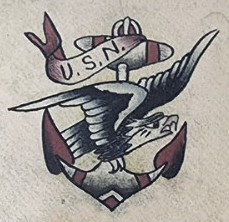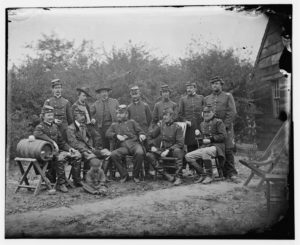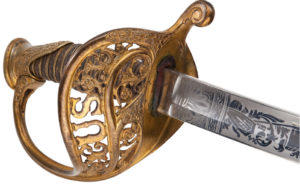Officers of the US Sixth Corps (May 1862)
4 March 2023
This fine James F. Gibson photograph is now in the collection of the Library of Congress. He took it on 14 May 1862 at Cumberland Landing, VA.
Seated: Col. Joseph J. Bartlett (formerly identified as Andrew A. Humphreys), Henry Slocum, Wm. B. Franklin, Wm. F. Barry and John Newton. Officers standing not indentified. African American child seated in front.
Four of the five identified officers were also at Antietam in September 1862 …
Joseph J. Bartlett – Colonel, 27th New York and commander 2nd Brigade, First Division, Sixth Army Corps at Antietam.
Henry Slocum – former Colonel 27th NY; Major General, USV and commander of the First Division, Sixth Corps at Antietam.
William B. Franklin – Major General, USA and commander of the Sixth Corps at Antietam.
William F Barry – Major, USA and Brigadier General, USV – Chief of Artillery, Army of the Potomac up to 27 August 1862; he was in the defenses of Washington during the Maryland Campaign.
John Newton – Major, USA and Brigadier General, USV and commander of the 3rd Brigade, First Division, Sixth Corps at Antietam.
USS Monocacy (c. 1890)
3 March 2023
Antietam survivor Martin J. Casey served through the war with Batteries A and B of the First Maryland Light Artillery and soon after, in 1866, enlisted in the US Navy. He served mostly on the Asiatic Station over nearly 25 years, on at least 8 ships, including this one.
She’s sidewheel gunboat USS Monocacy, pictured here in about 1890 “in Chinese waters.” She was named after the 1864 battle near Frederick, MD and was launched in Baltimore soon after it, in December 1864. She had an exceptionally long career in the Pacific, in continuous US Navy commission until sold to a Japanese firm in 1903.
Machinist Casey was scalded – presumably by steam from a burst boiler or line – while aboard Monocacy sometime in the 1870s and bore scars on his abdomen, left arm, and over his left eye afterward. He had a couple of tattoos also, of a dancing girl and a “naval emblem”.

Notes
More about USS Monocacy’s history is online from The Naval History and Heritage Command, source also of the photograph of the ship.
Casey’s service and details like his scarring and tattoos are from enlistment records in Returns of Enlistments of 13 April 1878 (Washington, DC) and 11 June 1887 (Mare Island, CA), online from fold3.
Capt John D Frank, Battery G/1st NY Light Artillery
1 March 2023
This stunning object is the hilt of a highly decorated United States Model of 1850 Foot Officer’s Sword presented by the men of his battery to Captain John Davis Frank in February 1862.
Even more amazing is that the same men were near mutiny just a month or two later due to his abusive treatment of them.
He may have learned that harsh leadership style during his nearly 13 years of pre-war Regular Army service (1848-1861), during which he was promoted from Private to First Sergeant of Battery A, 2nd United States Artillery. Fortunately, he was able to unlearn it with some personal counseling from his Corps Commander Major General Edwin Sumner.
Note
The sword pictured here was sold by Heritage Auctions in 2012 for about $5,000.



